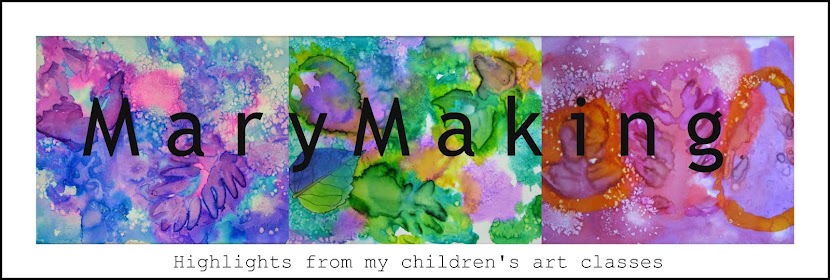This (whip smart) 4th grade student was cutting up his textured paper with reckless abandon and gluing it to his board in a haphazard manner. I said, "Let's make sure we use some intention when we cut and glue our shapes." Without a moment's hesitation he said "I'm doing my collage like Jackson Pollock, my intention was no intention" It completely caught me off guard and I started to tell him that I believed every splatter that Pollock made had some sense of intention behind it. And then I realized, I'm debating abstract expressionism with a 10 year old who is clearly enjoying this process, let alone making a connection to Pollock who we had not even discussed. It made me pause and smile and I told him to carry on!
Well done Matthew!
This was a very open ended project I did with my Abstract Art class. I was really trying to focus on process over product and let the children enjoy different methods of creating patterned and textured paper and finally incorporate them in a collage. I first played Pharrell's song "Happy." I said this would be the inspiration for our piece.We then made 4 different textured papers: Acrylic scraped with cardboard, wet on wet watercolor, rubbing alcohol and Adirondack ink, and Suminagashi (Japanese paper marbling). Fun and messy! Day 2, I showed them various collage art including, work by Rex Ray, artist and children's art teacher Mollie Moseley Morrison, and even the Gee's Bend Quilts. They had the option of painting their base or covering it completely with their collage work. Then I let them loose. I loved seeing the different ideas and compositions my 1st through 5th graders came up with. It was a nice departure from straightforward, subject based projects.











